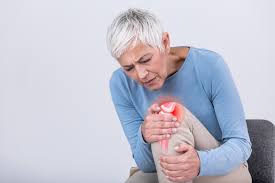
Five things to know about ‘wear and tear’ arthritis, osteoarthritis
Osteoarthritis is the most common chronic joint condition. OA as mostly abbreviated is also called wear-and-tear arthritis, degenerative arthritis, and degenerative joint disease.
According to a health platform, Healthline, Osteoarthritis often happens at the point where the two bones come together. It could cause pain, stiffness and other symptoms.
The Nigerian Orthopaedic Association claimed that the prevalence of Osteoarthritis causes about 1.5 million Nigerians to suffer from the disease.
Although it is unclear how health service access influences current estimations and whether prevalence varies across the diagnosis possibilities of time, age, and person.
Factors such as under-resourced healthcare infrastructure and limited clinical expertise might affect access to diagnostic services, with considerable variability in the prevalence of existing types of arthritis.
Africa estimates six types of arthritis prevalence; namely rheumatoid arthritis, osteoarthritis, juvenile arthritis, psoriatic arthritis, gout, and ankylosing spondylitis.
Recently, it was reported that a former male national U-17 team striker, Mbetobong Ibanga, was diagnosed with osteoarthritis and this ended his footballing career about 12 years ago.
During his diagnosis, Ibanga said a renowned professor of orthopaedic and trauma, Temitope Alonge, who was the Chief Medical Director of UCH then, said he had a knee degenerative disease, also known as osteoarthritis, and it had already spread throughout the knee, causing it to wear out.
Having looked at the story of Ibanga and some of the other victims of this disease, five things you need to know about Osteoarthritis and its medications were highlighted.
1. Osteoarthritis mostly affect the hands, fingers, shoulder, spine (typically at the neck or lower back), hips, and knees.
2. It causes disability, joint malformation, obesity and poor posture.
3. The commonest symptoms of the disease include joint pain, stiffness in the joint, loss of flexibility, tenderness or discomfort when pressing on the affected areas with your fingers, inflammation, crepitus, or grating, crackling, clicking, or popping sounds when you move your joints and bone spurs, or extra lumps of bone, which are typically painless.
4. OA is a progressive condition with five stages from 0 to 4. The first stage (0) represents a typical joint. Stage 4 represents severe OA. Not everyone who has OA will progress all the way to the stage.
5. The treatment of OA is centred upon symptom management. The type of treatment that will help you the most will largely depend on the severity of your symptoms and their location.





